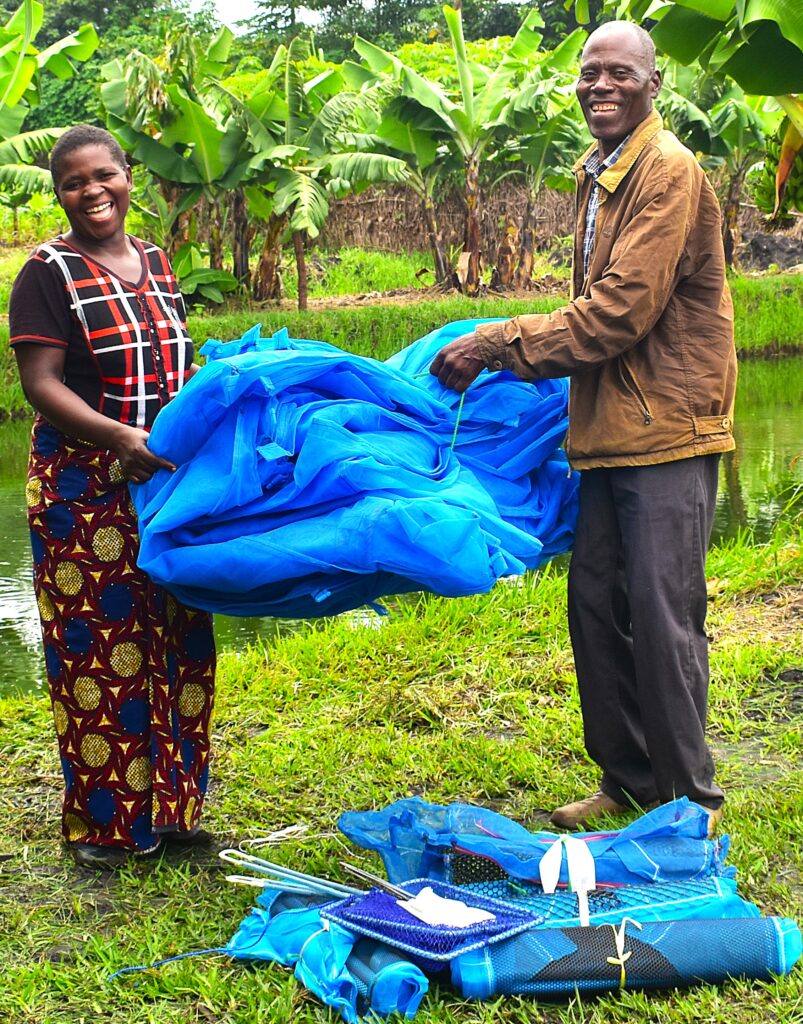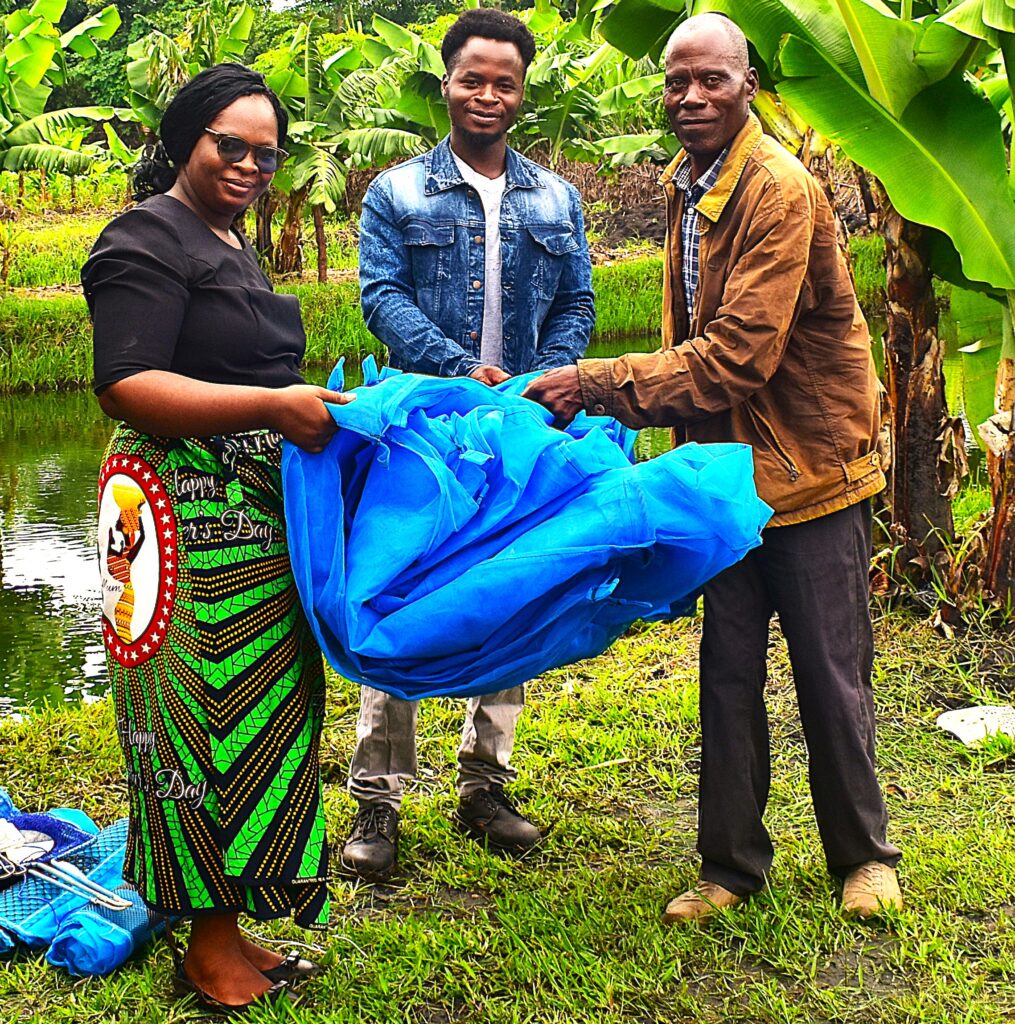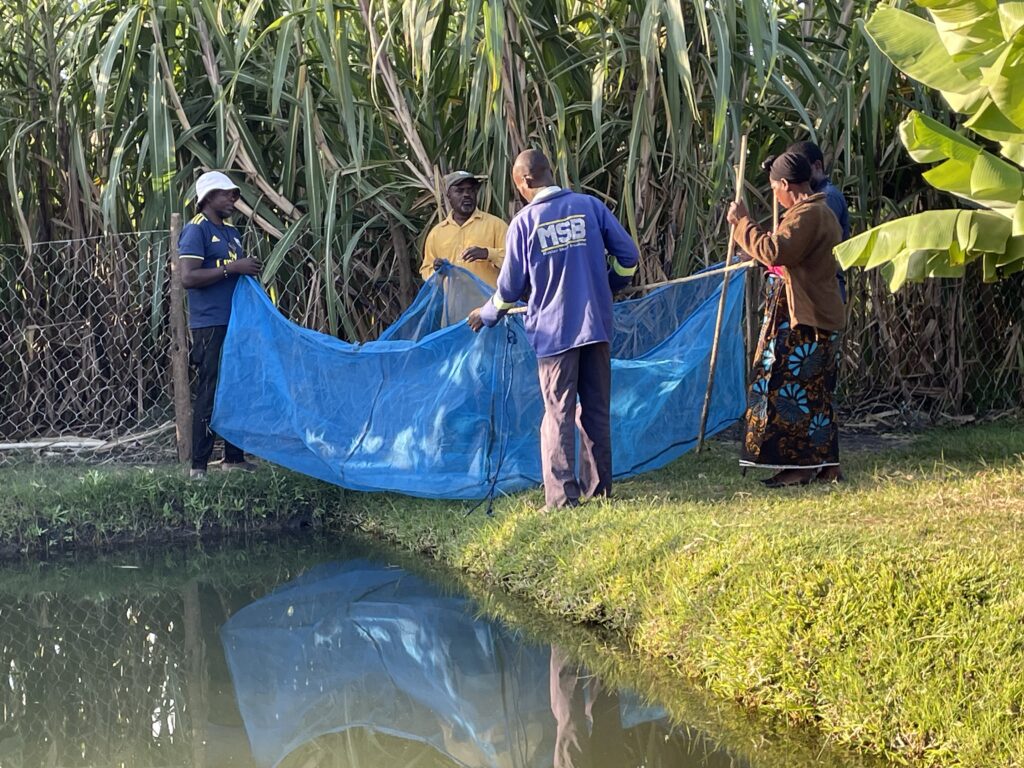Sitifano Chiphazi, a 60-year-old fish farmer, lives with his wife and four children in Nyemba village in Lilongwe district. He uses his land to farm fish in ponds and grow a diverse range of crops, including bananas, sugarcane, and various vegetables. The land is his livelihood, and Sitifano is deeply invested and committed to sustainable farming for future generations.
Sitifano first learned about fish farming in 2020 on Zodiak Radio Station where he heard about a GIZ-sponsored project focused on adding value to aquaculture products through the processing chain. He was intrigued by its potential to provide additional income for his family and decided to dig a 264-square-metre pond, despite his limited knowledge of pond construction or fish farming. In 2022, he participated in formal fish farming training offered by GIZ-Malawi in Mtengela. Empowered with knowledge and skills, he expanded his fish farming operation.
He built three more ponds of varying dimensions while continuing to grow diverse crops. When Kawjo Foundation learned that there was a committed and engaged farmer who was successfully integrating aquaculture and agriculture, they requested that it deliver climate-smart aquaculture training to other potential fish farmers on his farm. Sitifano enthusiastically agreed.
Sitifano had already applied climate-smart techniques when building his four ponds. His ponds are sufficiently deep at 2.5 metres, which prevents evaporation and flooding, and maintains cooler pond temperatures that support fish health. Sitifano also diversifies his land by planting and growing many trees and crops that retain water and resist soil degradation. Moreover, because Sitifano integrates crops, he takes advantage of the symbiotic relationship between aquaculture and agriculture. Pond waste water irrigates the plants, and in return, the plant waste is thrown into the ponds as fish feed.
In 2024, Kawjo Foundation received a generous grant from GIZ-Malawi to expand its aquaculture training and train and equip five fingerling hatchery operators to begin their own operations. Sitifano was an obvious candidate to grow fingerlings because of his pre-existing ponds and his commitment to aquaculture development within his community.

Fingerlings are juvenile fish that are the size of an adult finger and are a crucial component of sustainable aquaculture. Stocking ponds with fingerlings rather than fry, or newly hatched fish, significantly increases fish harvests because their size and development provide them with a competitive edge against predators and environmental stressors.
Despite the knowledge that the production of high-quality fingerlings yields greater fish harvests, fingerlings are in short supply in Malawi. Hatcheries cannot keep up with the demand, and therefore, fish farmers are resigned to using fry or recycled fingerlings from neighbouring farms. Sitifano understood that producing fingerlings on his land would benefit not only his family, but his entire community.
After the training, Sitifano and the other selected hatchery operators were provided with different materials to develop their businesses. This included hapas, feed, hand nets, fish, gas cylinders, weigh scales, graders, and a record-keeping book – all the essentials to begin operations. Kawjo project officer, Bertha Michuru, coached Sitifano with each stage of production. First, male and female fish (the brood stock) were separated into different hapas, which induces breeding when they come together because, as we know, absence makes the heart grow fonder. Within one week of the mixing of male and female fish, baby fish appear in the pond. The feed is then used to grow the small fish into fingerlings, which are then scooped with nets and put into a separate hapas. Weigh scales and graders are used to monitor and evaluate yield, which is then recorded in the record book.

When Bertha last visited Sitifano, he was receiving requests from other farmers who wanted to purchase his fingerlings. Neighbouring fish farmers will benefit from Sitifano’s operation because they now have access to good-quality fingerlings. Sitifano’s hatchery is now a local source of fingerlings.
The impact of Sitifano’s operation extends beyond a local source of fingerlings. Sitifano is part of a fish farmers group which includes women and youth, who meet, share knowledge and experience, and support each other, whether it is digging ponds together or sharing resources. While Bertha mentors Sitifano each week, Sitifano mentors others in his community.
Sitifano is optimistic about the future. The investment that Kawjo Foundation and GIZ-Malawi gave to him in the form of knowledge, support, and resources will be shared among Sitifano’s family and community. Moreover, the investment in climate-smart technologies to farm the land means that Sitifano’s children will inherit land that is productive and healthy and will feed and provide for them for generations.


my name is moses khonje from mzimba just wanted to request for these trainings as well to take place here. It can really help our community and many youths.
I’m very impressed with the response to situations as they arise. Such talented farmers. Thank you for telling me about new practices in Lilongwe district.